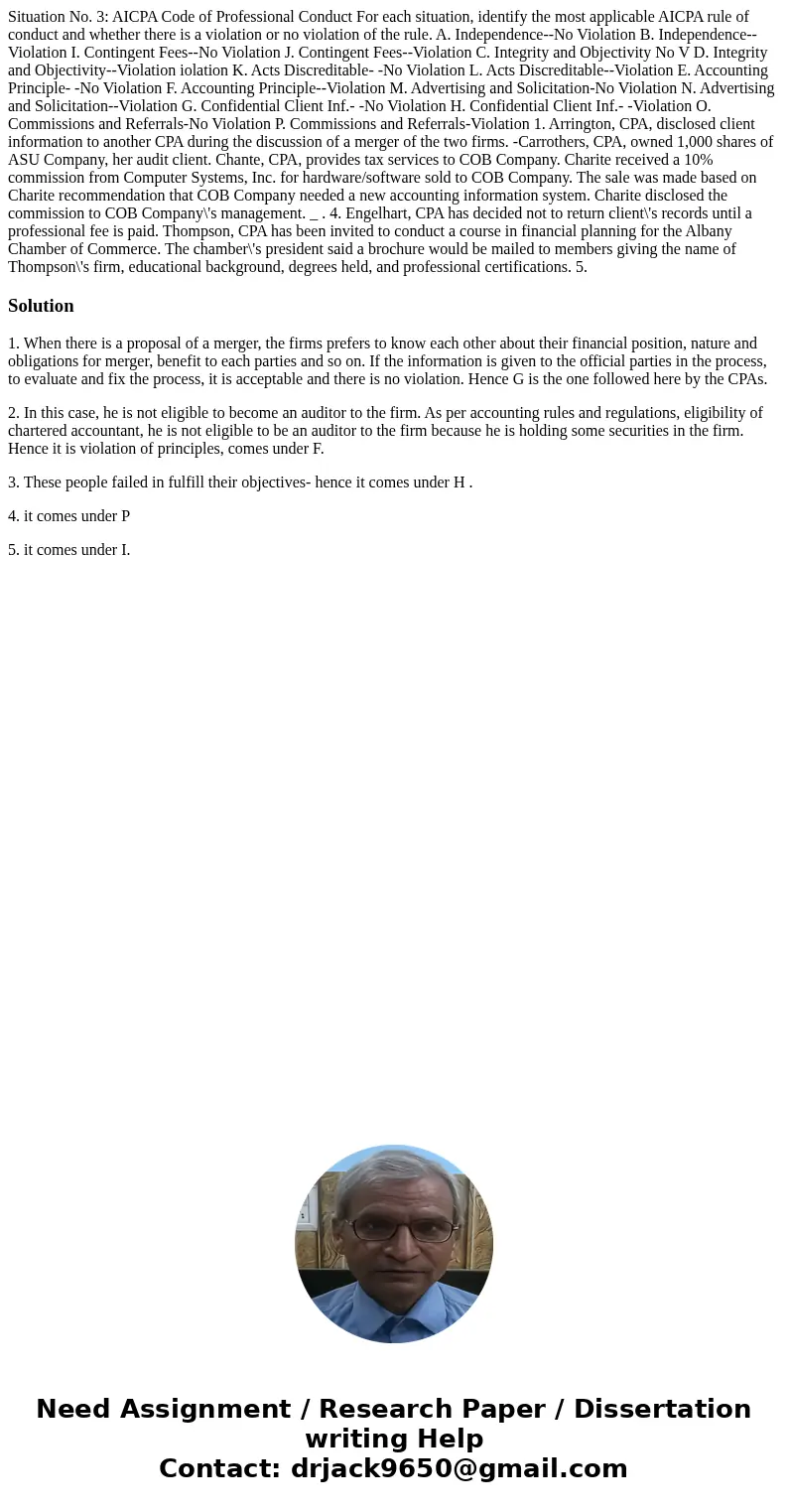Situation No. 3: AICPA Code of Professional Conduct For each situation, identify the most applicable AICPA rule of conduct and whether there is a violation or no violation of the rule. A. Independence--No Violation B. Independence--Violation I. Contingent Fees--No Violation J. Contingent Fees--Violation C. Integrity and Objectivity No V D. Integrity and Objectivity--Violation iolation K. Acts Discreditable- -No Violation L. Acts Discreditable--Violation E. Accounting Principle- -No Violation F. Accounting Principle--Violation M. Advertising and Solicitation-No Violation N. Advertising and Solicitation--Violation G. Confidential Client Inf.- -No Violation H. Confidential Client Inf.- -Violation O. Commissions and Referrals-No Violation P. Commissions and Referrals-Violation 1. Arrington, CPA, disclosed client information to another CPA during the discussion of a merger of the two firms. -Carrothers, CPA, owned 1,000 shares of ASU Company, her audit client. Chante, CPA, provides tax services to COB Company. Charite received a 10% commission from Computer Systems, Inc. for hardware/software sold to COB Company. The sale was made based on Charite recommendation that COB Company needed a new accounting information system. Charite disclosed the commission to COB Company\'s management. _ . 4. Engelhart, CPA has decided not to return client\'s records until a professional fee is paid. Thompson, CPA has been invited to conduct a course in financial planning for the Albany Chamber of Commerce. The chamber\'s president said a brochure would be mailed to members giving the name of Thompson\'s firm, educational background, degrees held, and professional certifications. 5.
1. When there is a proposal of a merger, the firms prefers to know each other about their financial position, nature and obligations for merger, benefit to each parties and so on. If the information is given to the official parties in the process, to evaluate and fix the process, it is acceptable and there is no violation. Hence G is the one followed here by the CPAs.
2. In this case, he is not eligible to become an auditor to the firm. As per accounting rules and regulations, eligibility of chartered accountant, he is not eligible to be an auditor to the firm because he is holding some securities in the firm. Hence it is violation of principles, comes under F.
3. These people failed in fulfill their objectives- hence it comes under H .
4. it comes under P
5. it comes under I.

 Homework Sourse
Homework Sourse